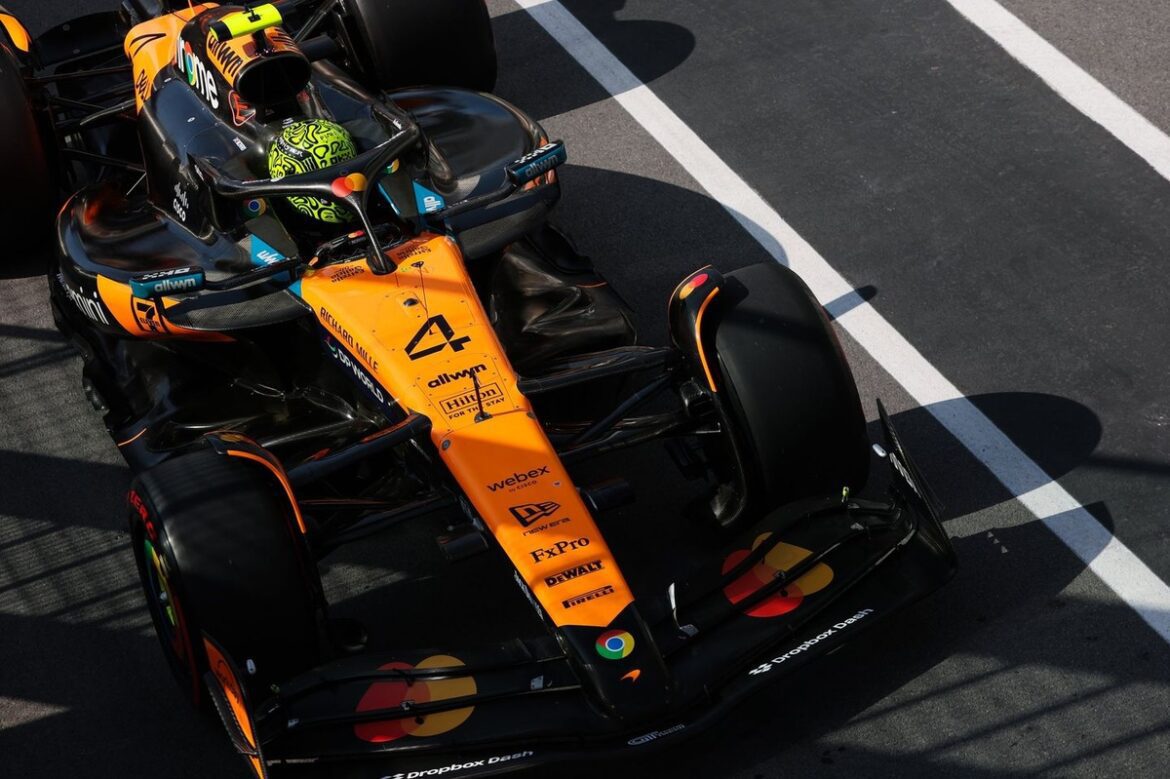Lando Norris and McLaren’s Performance at the Canadian Grand Prix
In the high-stakes world of Formula 1, every qualifying session can make or break a team’s weekend. This was certainly the case for McLaren at the recent Canadian Grand Prix, where team principal Andrea Stella shared insights into Lando Norris’s performance. Norris faced challenges during qualifying, ultimately securing a seventh-place start, a position that fell short of expectations, especially after a strong showing in free practice.
Qualifying Challenges for Lando Norris
Lando Norris’s journey through the Canadian Grand Prix weekend was marked by ups and downs. After what had been described as McLaren’s "worst Friday" of the season, Norris appeared to regain some momentum by achieving the fastest time in the third free practice session (FP3). This result generated optimism heading into qualifying, but the expectations did not translate into the desired outcome on the track.
During qualifying, Norris struggled to find the right balance for a flying lap that would place him among the top contenders. He acknowledged that he made "a couple of big mistakes" which ultimately hindered his performance. Despite the setbacks, Norris’s resilience and competitive spirit were evident throughout the weekend, but the pressure to perform may have led to an overly aggressive driving style during qualifying.
Team Principal Andrea Stella’s Insights
Andrea Stella, the principal of the McLaren Formula 1 team, provided valuable context surrounding Norris’s qualifying performance. He noted that although the results were disappointing, there were significant improvements in Norris’s overall comfort with the car. At the beginning of the season, Norris had expressed concerns regarding the car’s steering feedback and front grip. However, Stella remarked that changes made to the car, particularly the front suspension, had positively impacted Norris’s confidence in handling the vehicle.
Stella pointed out that Norris had shown competitive potential throughout the weekend, particularly in FP3. The fact that he made it to Q3 using used tires in Q2 showcased his skill and adaptability. This performance created a sense of optimism for the final qualifying session.
The Price of Pushing Too Hard
However, the excitement of potential success turned into disappointment as Norris’s overzealous approach during his final qualifying attempt led to a costly encounter with the wall. Stella explained that while Norris had the speed to compete for a top position, the nature of the track required a measured approach. Pushing the limits is often necessary in Formula 1, but it can also be perilous; a single mistake can drastically alter the outcome.
Norris’s close call with the wall illustrated the fine line between speed and caution in racing. Stella emphasized that even when a driver feels the speed is there, it’s crucial to maintain composure. The team believes that if Norris had approached the final lap with a bit more restraint, he could have been in contention for pole position.
Oscar Piastri’s Strategic Choices
Compounding the situation, Norris’s teammate Oscar Piastri opted for a different strategy during qualifying. Piastri, who managed to secure a third-place start, chose not to utilize the front suspension upgrade that McLaren had introduced for the Canadian Grand Prix. While both drivers tested the new component during practice, Piastri decided to revert to the previous suspension setup, which may have contributed to his better qualifying position.
Stella addressed these strategic choices, explaining that the changes made to the front suspension aimed to provide drivers with enhanced feedback at the front end. While Norris opted to stick with the upgrade, Piastri’s decision to revert highlighted a different approach to handling the car’s dynamics. This choice ultimately paid off for Piastri, placing him in a competitive position for the race.
Reflections on the Weekend
Despite the immediate disappointment from qualifying, Stella remained optimistic about Norris’s potential moving forward. He reiterated that the speed and capability were evident in Norris’s driving, and with a bit of adjustment in approach, Norris could easily reclaim his place as a top contender. The competitive nature of Formula 1 means that every team faces unique challenges, and McLaren’s recent improvements suggest that they are on the right track.
Stella’s analysis of the situation reflects a broader understanding of the intricacies involved in high-level motorsport. It’s not just about raw speed; it’s also about strategy, teamwork, and the ability to adapt to changing circumstances. As the season progresses, both Norris and Piastri will have opportunities to refine their skills and tactics, aiming for better results in future races.
Conclusion
Lando Norris’s experience at the Canadian Grand Prix serves as a reminder of the unpredictable nature of Formula 1. While the sport demands peak performance, it also requires drivers to balance aggression with caution. As McLaren continues to develop its car and improve performance, both Norris and Piastri will have the chance to shine in upcoming races. The team’s journey is far from over, and the lessons learned in Canada will undoubtedly play a role in shaping their strategies moving forward.
